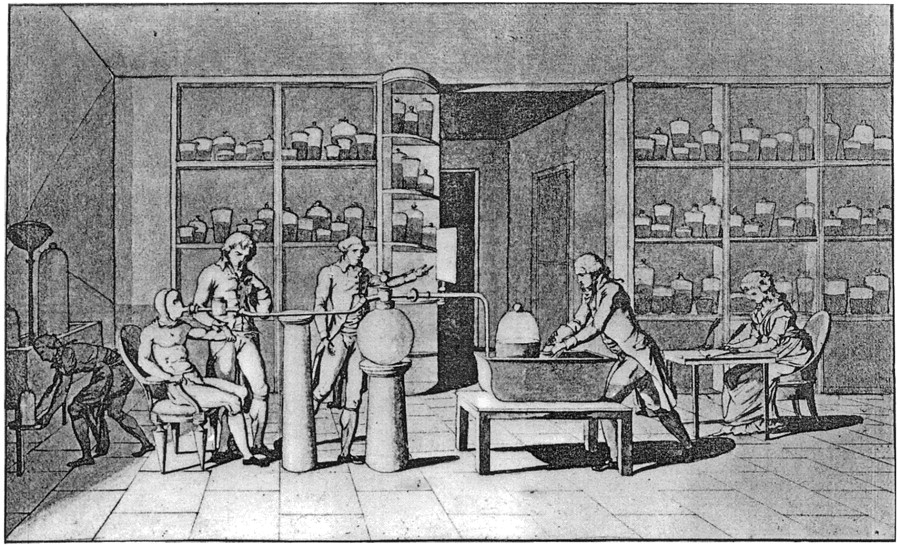|
Lavoisier Island
Lavoisier Island is an island long and wide, lying between Rabot and Watkins Islands in the Biscoe Islands, Antarctica. It is separated from Renaud Island and Rabot Island to the northeast by Pendleton Strait, from Watkins Island to the southwest by Lewis Sound, and from Krogh Island to the west-southwest by Vladigerov Passage. Lavoisier Island is named ''Isla Serrano'' by Chile and ''isla Mitre'' by Argentina. The island was first charted by the French Antarctic Expedition, 1903–05, under Jean-Baptiste Charcot, and named "Ile Nansen" after Fridtjof Nansen, Norwegian Arctic explorer. To avoid confusion with Nansen Island (q.v.) in Wilhelmina Bay, the UK-APC recommended in 1960 that the island be renamed for Antoine Laurent Lavoisier, French chemist who pioneered the study of metabolism. Winslow Rock Winslow Rock is a rock close off the east side of Lavoisier Island, Biscoe Islands. Mapped from surveys by Falkland Islands Dependencies Survey (FIDS) (1958–59). There is a ... [...More Info...] [...Related Items...] OR: [Wikipedia] [Google] [Baidu] |
Antarctica
Antarctica () is Earth's southernmost and least-populated continent. Situated almost entirely south of the Antarctic Circle and surrounded by the Southern Ocean (also known as the Antarctic Ocean), it contains the geographic South Pole. Antarctica is the fifth-largest continent, being about 40% larger than Europe, and has an area of . Most of Antarctica is covered by the Antarctic ice sheet, with an average thickness of . Antarctica is, on average, the coldest, driest, and windiest of the continents, and it has the highest average elevation. It is mainly a polar desert, with annual Climate of Antarctica#Precipitation, precipitation of over along the coast and far less inland. About 70% of the world's freshwater reserves are frozen in Antarctica, which, if melted, would raise global sea levels by almost . Antarctica holds the record for the Lowest temperature recorded on Earth, lowest measured temperature on Earth, . The coastal regions can reach temperatures over in the ... [...More Info...] [...Related Items...] OR: [Wikipedia] [Google] [Baidu] |
French Antarctic Expedition
The French Antarctic Expedition is any of several French expeditions in Antarctica. 1837–1840 In 1837, during an 1837–1840 expedition across the deep southern hemisphere, Captain Jules Dumont d'Urville sailed his ship ''Astrolabe'' along a coastal area of Antarctica which he later named Adélie Land, in honor of his wife. During the Antarctic part of this expedition, Dumont d'Urville team performed the first experiments to determine the approximate position of the South magnetic pole, and landed on Débarquement Rock in the Géologie Archipelago, () just 4 km from the mainland, where he took mineral and animal samples. On his return to France in 1840 he was made rear admiral. 1904–1907 Jean-Baptiste Charcot was appointed leader of a 1904–1907 French Antarctic Expedition, aboard the ship ''Français'', exploring the west coast of Graham Land portion of the Antarctic Peninsula. The expedition reached Adelaide Island in 1905 and took pictures of the Pal ... [...More Info...] [...Related Items...] OR: [Wikipedia] [Google] [Baidu] |
Charles E
Charles is a masculine given name predominantly found in English language, English and French language, French speaking countries. It is from the French form ''Charles'' of the Proto-Germanic, Proto-Germanic name (in runic alphabet) or ''*karilaz'' (in Latin alphabet), whose meaning was "free man". The Old English descendant of this word was ''Churl, Ċearl'' or ''Ċeorl'', as the name of King Cearl of Mercia, that disappeared after the Norman conquest of England. The name was notably borne by Charlemagne (Charles the Great), and was at the time Latinisation of names, Latinized as ''Karolus'' (as in ''Vita Karoli Magni''), later also as ''Carolus (other), Carolus''. Etymology The name's etymology is a Common Germanic noun ''*karilaz'' meaning "free man", which survives in English as wikt:churl, churl (< Old English ''ċeorl''), which developed its deprecating sense in the Middle English period. Some Germanic languages, for example Dutch language, Dutch and German ... [...More Info...] [...Related Items...] OR: [Wikipedia] [Google] [Baidu] |
United Kingdom Antarctic Place-Names Committee
The UK Antarctic Place-Names Committee (or UK-APC) is a United Kingdom government committee, part of the Foreign and Commonwealth Office, responsible for recommending names of geographical locations within the British Antarctic Territory (BAT) and the South Georgia and the South Sandwich Islands (SGSSI). Such names are formally approved by the Commissioners of the BAT and SGSSI respectively and published in the BAT Gazetteer and the SGSSI Gazetteer maintained by the Committee. The BAT names are also published in the international Composite Gazetteer of Antarctica maintained by SCAR. The Committee may also consider proposals for new place names for geographical features in areas of Antarctica outside BAT and SGSSI, which are referred to other Antarctic place-naming authorities or decided by the Committee itself if situated in the unclaimed sector of Antarctica. Names attributed by the committee * Anvil Crag, named for descriptive features *Anckorn Nunataks, named after J. F. Anck ... [...More Info...] [...Related Items...] OR: [Wikipedia] [Google] [Baidu] |
Falkland Islands Dependencies Survey
The Falkland Islands and Dependencies Aerial Survey Expedition (FIDASE) was an aerial survey of the Falkland Islands Dependencies The Falkland Islands Dependencies was the constitutional arrangement from 1843 until 1985 for administering the various British territories in List of Antarctic and sub-Antarctic islands, Sub-Antarctica and Antarctica which were governed from t ... and the Antarctic Peninsula which took place in the 1955–56 and 1956–57 southern summers. Funded by the Colonial Office and organized by Peter Mott, the survey was carried out by Hunting Aerosurveys Ltd. The expedition was based at Deception Island and utilized the ''Oluf Sven'', two Canso flying-boats, and several helicopters. The photographic collection, held by the British Antarctic Survey as the United Kingdom Antarctic Mapping Centre, comprises about 12,800 frames taken on 26,700 kilometers of ground track. References {{reflist British Antarctic Territory Surveying of the United Kingdom ... [...More Info...] [...Related Items...] OR: [Wikipedia] [Google] [Baidu] |
Metabolism
Metabolism (, from ''metabolē'', "change") is the set of life-sustaining chemical reactions in organisms. The three main functions of metabolism are: the conversion of the energy in food to energy available to run cellular processes; the conversion of food to building blocks of proteins, lipids, nucleic acids, and some carbohydrates; and the elimination of metabolic wastes. These enzyme-catalyzed reactions allow organisms to grow and reproduce, maintain their Structures#Biological, structures, and respond to their environments. The word ''metabolism'' can also refer to the sum of all chemical reactions that occur in living organisms, including digestion and the transportation of substances into and between different cells, in which case the above described set of reactions within the cells is called intermediary (or intermediate) metabolism. Metabolic reactions may be categorized as ''catabolic''—the ''breaking down'' of compounds (for example, of glucose to pyruvate by c ... [...More Info...] [...Related Items...] OR: [Wikipedia] [Google] [Baidu] |
Antoine Laurent Lavoisier
Antoine-Laurent de Lavoisier ( ; ; 26 August 17438 May 1794), CNRS () also Antoine Lavoisier after the French Revolution, was a and who was central to the 18th-century |
Wilhelmina Bay
Wilhelmina Bay () is a bay wide between the Reclus Peninsula and Cape Anna along the west coast of Graham Land on the Antarctic Peninsula. Location Wilhelmina Bay is on the Danco Coast on the west side of the Antarctic Peninsula. It indents the southeast side of Gerlache Strait opposite the Solvay Mountains of Brabant Island. The Arctowski Peninsula defines its southwest side, Forbidden Plateau its southeast side and Nansen Island is in the northeast of the bay. Wilhelmina Bay is between Charlotte Bay to the northeast and Andvord Bay to the southwest. Coastal features include, clockwise from the eastern entrance, *The Reclus Peninsula, including Jacques Peaks, Bancroft Bay, Cañón Point, Zapato Point, and Café Point. *Leonardo Glacier, Sadler Point, Blanchard Glacier, Garnerin Point, Pishtachev Peak and Rozier Glacier. *Piccard Cove, including Sophie Cliff, Balis Ridge, Montgolfier Glacier, Bacho Kiro Peak, Mechit Buttress, Woodbury Glacier and O'Neal Point, *The Arctows ... [...More Info...] [...Related Items...] OR: [Wikipedia] [Google] [Baidu] |
Nansen Island
Nansen Island () is the largest of the islands lying in Wilhelmina Bay off the west coast of Graham Land, Antarctica. Location Nansen Island is off the Danco Coast on the west side of the Antarctic Peninsula. It is in the northeast of Wilhelmina Bay, to the southeast of Gerlache Strait. Charlotte Bay is to the east. Forbidden Plateau on the mainland is to the south. Discovery and name Nansen Island was discovered by the Belgian Antarctic Expedition (BelgAE; 1897–1899) under Adrien de Gerlache and named for Dr. Fridtjof Nansen, noted Arctic explorer. Features Features and nearby features include: Patcha Point . The south end of Nansen Island. Charted by the BelgAE under Gerlache, 1897-99. Named by the UK Antarctic Place-Names Committee (UK-APC) in 1960 for Jan Patcha, helicopter pilot with the Falkland Islands and Dependencies Aerial Survey Expedition (FIDASE) which photographed this area in 1956-57. Bearing Island . A small island lying midway between Nansen and ... [...More Info...] [...Related Items...] OR: [Wikipedia] [Google] [Baidu] |
Fridtjof Nansen
Fridtjof Wedel-Jarlsberg Nansen (; 10 October 1861 – 13 May 1930) was a Norwegian polymath and Nobel Peace Prize laureate. He gained prominence at various points in his life as an explorer, scientist, diplomat, humanitarian and co-founded the Fatherland League (Norway), Fatherland League. He led the team that made the first crossing of the Greenland interior in 1888, traversing the island on cross-country skis. He won international fame after reaching a record northern latitude of 86°14′ during his Nansen's Fram expedition, ''Fram'' expedition of 1893–1896. Although he retired from exploration after his return to Norway, his techniques of polar travel and his innovations in equipment and clothing influenced a generation of subsequent Arctic and Antarctic expeditions. He was elected an International Member of the American Philosophical Society in 1897. Nansen studied zoology at the Royal Frederick University in Christiania, Norway, Christiania and later worked as a curato ... [...More Info...] [...Related Items...] OR: [Wikipedia] [Google] [Baidu] |
Jean-Baptiste Charcot
Jean-Baptiste Étienne Auguste Charcot, better known in France as Commandant Charcot, (15 July 1867 in Neuilly-sur-Seine near Paris – 16 September 1936 at sea (30 miles north-west of Reykjavik, Iceland), was a French scientist, medical doctor and polar scientist. His father was the neurologist Jean-Martin Charcot (1825–1893). As a sportsman, he was French rugby XV champion in 1896 and also won a double silver medal in sailing at the 1900 Summer Olympics. Life Jean-Baptiste Charcot was appointed leader of the French Antarctic Expedition with the ship ''Français'' exploring the west coast of Graham Land from 1904 until 1907. The expedition reached Adelaide Island in 1905 and took pictures of the Palmer Archipelago and Loubet Coast. From 1908 until 1910, another expedition followed with the ship '' Pourquoi Pas ?'', exploring the Bellingshausen Sea and the Amundsen Sea and discovering Loubet Land, Marguerite Bay, Mount Boland and Charcot Island, which was named after his ... [...More Info...] [...Related Items...] OR: [Wikipedia] [Google] [Baidu] |
Argentina
Argentina, officially the Argentine Republic, is a country in the southern half of South America. It covers an area of , making it the List of South American countries by area, second-largest country in South America after Brazil, the fourth-largest country in the Americas, and the List of countries and dependencies by area, eighth-largest country in the world. Argentina shares the bulk of the Southern Cone with Chile to the west, and is also bordered by Bolivia and Paraguay to the north, Brazil to the northeast, Uruguay and the South Atlantic Ocean to the east, and the Drake Passage to the south. Argentina is a Federation, federal state subdivided into twenty-three Provinces of Argentina, provinces, and one autonomous city, which is the federal capital and List of cities in Argentina by population, largest city of the nation, Buenos Aires. The provinces and the capital have their own constitutions, but exist under a Federalism, federal system. Argentina claims sovereignty ov ... [...More Info...] [...Related Items...] OR: [Wikipedia] [Google] [Baidu] |



